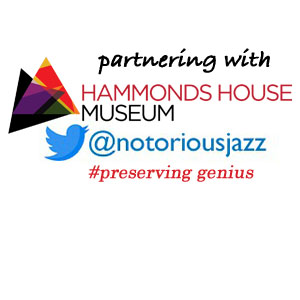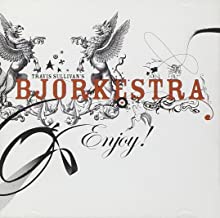
Daily Dose Of Jazz…
Travis Sullivan was born in 1971 in New York City and founded his 18 piece genre bending jazz orchestra Björkestra in New York City in 2004. Led by the alto saxophonist, musical arrangements are by Sullivan, Kevin Schmidt, and Kelly Pratt. The Björkestra performs the music of eclectic musician Björk.
Since its debut at the Knitting Factory in New York City, the group has performed around the country. In 2007 Sullivan conducted his arrangements with the Sicilian Jazz Orchestra in Palermo, Sicily.
Members of the orchestra, that includes vocalist Becca Stevens, have performed with Arcade Fire, Dr. Dre, Charlie Hunter, Avishai Cohen, Ana Cohen, Jane Monheit, Clark Terry, Rachel Z, Phil Woods, The Spam All Stars, Maria Schneider, and the Saturday Night Live Band, as well as, with Donny McCaslin, Kurt Rosenwinkel and Ben Monder.
His project Altois: The Masters Of Alto Sax interprets the music of the most influential alto saxophonists of the bebop era. Alto saxophonist, pianist, composer and arranger Travis Sullivan continues to further his exploration of jazz.
More Posts: bandleader,composer,history,instrumental,jazz,piano
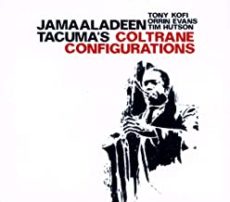
Daily Dose Of Jazz…
Jamaaladeen Tacuma was born Rudy McDaniel on June 11, 1956 in Hempstead, New York. Raised in Philadelphia, Pennsylvania he showed interest in music at a young age, taking up the electric bass and performing with the organist Charles Earland in his teens.
Through Earland, he came to know the record producer Reggie Lucas, who introduced Jamaaladeen to Ornette Coleman in 1975 at age 19. As the electric bassist for Coleman’s funky harmolodic Prime Time group, he rose to prominence quickly. During the 1980s he was playing a Steinberger bass that helped him create his readily identifiable sound.
His work with Prime Time got him an appearance with the band on Saturday Night Live in 1979. He went on to work with James “Blood” Ulmer, Walt Dickerson, Chuck Hammer, David Murray, and collaborated with The Golden Palominos in 1983. Tacuma recorded his first solo album as a leader, Show Stopper, that same year.
During the 1980s Jamaaladeen started to perform in a relatively straightforward funk/R&B setting with his group Cosmetic. He received the highest number of votes ever for an electric bassist in the “talent deserving wider recognition” category of the Down Beat magazine critics poll.
Though maintaining a low profile since the early 1990s, he has remained active but has maintained a lower profile. He has made numerous solo and collaborative recordings, returning to the jazz spotlight with an appearance on the World Saxophone Quartet’s Political Blues.
In 2007, he joined with Grant Calvin Weston and guitarist Vernon Reidto form the power trio Free Form Funky Freqs. He recorded two albums with Basso Nouveau. He has received numerous awards and fellowships and since 2015 he has presented the annual Outsiders Improvised & Creative Music Festival in Philadelphia. Bassist Jamaaladeen Tacuma continues to tour, produce and record worldwide.
More Posts: bandleader,bass,history,instrumental,jazz,music
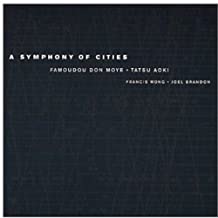
Daily Dose Of Jazz…
Donald Moye, Jr., known professionally as Famadou Don Moye, was born May 23, 1946 in Rochester, New York and during his youth performed in various drum and bugle corps including the Rochester Crusaders as well as church choir. He took violin lessons during this time and was exposed to jazz at an early age since his mother worked for a local social club that had a jazz club next door that hosted musicians such as Kenny Burrell and Jimmy McGriff.
He went on to study percussion at Wayne State University in Detroit, Michigan and lived in the same building as trumpeter Charles Moore, who became his mentor. He played in the groups African Cultural Ensemble, and Moore’s group, the Detroit Free Jazz. He first encountered the Association for the Advancement of Creative Musicians (AACM) due to the revolving door of musicians in and out of Moore’s residence. In early 1968, Moore’s band traveled to Europe and Moye decided to live there for the next couple of years, touring and visiting the continent as well as Northern Africa.
By 1969, the AEC had augmented into the percussion-less quartet of Roscoe Mitchell, saxophonist Joseph Jarman, trumpeter Lester Bowie and bassist Malachi Favors Maghostut. The group crossed the Atlantic Ocean and arrived in Europe to perform throughout the continent. Don at the time was rehearsing and performing in Paris, France, at the American Center for Students and Artists. When Mitchell met with Moye again at the Center, he asked Moye to join his group, which was already known as the Art Ensemble of Chicago and had issued several recordings including three releases on the European label BYG Actual.
After returning to the States in the early 1970s, he played with the Black Artists Group in St. Louis, Missouri before settling in the Chicago, Illinois area. He was also in a duo with fellow percussionist Steve McCall who later was a member of Air with Henry Threadgil while still playing with the AEC. In the mid-1980s, Moye joined The Leaders, a jazz group consisting of AEC members Bowie, Chico Freeman, Arthur Blythe, Cecil McBee, and Kirk Lightsey.
Moye has also recorded numerous solo albums as leader of his own band. Moye toured and recorded again with the AEC in the 1990s, which was dealt a blow with the 1999 death of Bowie. Other groups he led in the ’90s include the Joseph Jarman/Famoudou Don Moye Magic Triangle Band and the Sun Percussion Summit. Famadou Don Moye continues to perform and record.
More Posts: bandleader,drums,history,instrumental,jazz,music,percussion
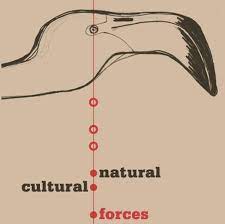
Daily Dose Of Jazz…
Warren Smith was born on May 14, 1934 in Chicago, Illinois, to a musical family. His father played saxophone and clarinet with Noble Sissle and Jimmie Noone, and his mother was a harpist and pianist. At the age of four he studied clarinet with his father. He graduated from the University of Illinois in 1957, then received a master’s degree in percussion from the Manhattan School of Music in 1958.
One of his earliest major recording dates was with Miles Davis as a vibraphonist in 1957. In 1958 Warren found work in Broadway pit bands and also played with Gil Evans. In 1961 he co-founded the Composers Workshop Ensemble. In the 1960s Smith accompanied Aretha Franklin, Nina Simone, Lloyd Price, and Nat King Cole; he worked with Sam Rivers from 1964–76 and with Gil Evans again from 1968 to 1976.
In 1969 he played with Janis Joplin and in 1971 with King Curtis and Tony Williams. He was also a founding member of Max Roach’s percussion ensemble, M’Boom, in 1970.
In the 1970s and 1980s Smith had a loft called Studio Wis that acted as a performing and recording space for many young New York jazz musicians, such as Wadada Leo Smith and Oliver Lake. Through the 1970s Smith played with Andrew White, Julius Hemphill, Muhal Richard Abrams, Nancy Wilson, Quincy Jones, Count Basie, and Carmen McRae. Other credits include extensive work with rock and pop musicians and time spent with Anthony Braxton, Charles Mingus, Henry Threadgill, Van Morrison, and Joe Zawinul.
He continued to work on Broadway well into the 1990s, and has performed with a number of classical ensembles. Smith taught in the New York City public school system from 1958 to 1968, at Third Street Settlement from 1960 to 1967, at Adelphi University in 1970–71, and at SUNY-Old Westbury from 1971. He remains connected to the music at 87.
More Posts: bandleader,history,instrumental,jazz,music,percussion
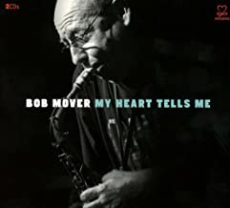
Daily Dose Of Jazz…
Bob Mover was born March 22, 1952 in Boston, Massachusetts into a musical family as his father played professionally with among others the Charlie Spivak Orchestra. Starting on the alto saxophone at age 13, he studied with Phil Woods at a summer music camp and took private lessons with Ira Sullivan.
In 1973, at the age of 21, Mover was a sideman for Charles Mingus for a five-month period at New York City’s 5 Spot Café. By 1975 he was working regularly in New York City jazz clubs with Chet Baker and he made his first European appearances with Baker at La Grande Parade du Jazz in Nice, France, Jazz Festival Laren in the Netherlands, and the Middelheim Jazz Festival in Antwerp, Belgium.
By late 1975, Bob started leading his own groups around the New York area and made his first two albums as a leader for Choice and Vanguard in 1976 and 1977 respectively: On the Move (Choice) and Bob Mover (Vanguard). Weekly gigs at the Sweet Basil in Greenwich Village included Tom Harrell, Jimmy Garrison, Kenny Barron, Albert Dailey, Ben Riley, Mike Nock, and Ron McLure.
Reuniting with Chet Baker in 1981 for a European tour and landing in Germany they recorded Chet Baker Live at Club Salt Peanuts Koln, Volumes 1 and 2 for the Circle label. Mover recorded two more albums as a leader in 1981 and 1982, In the True Tradition and Things Unseen, both issued by Xanadu.
Moving to Montreal, Canada in 1983 he taught at Concordia University. Three years later he recorded his fifth album as leader, The Nightbathers, with pianist Paul Bley and guitarist John Abercrombie, which was an experiment in free improvisation. From 1987 to 1997, Mover lived in Toronto and toured Europe and with Don Thompson and Archie Alleyne, he helped found the Toronto Jazz Quartet. He accepted a teaching position at York University, giving saxophone master classes and teaching a course called Musicianship for Jazz Singers. Alto saxophonist, bandleader and educator Bob Mover has recorded ten albums as a leader, eight as a sideman and continues to perform, record and teach.
More Posts: bandleader,history,instrumental,jazz,music,saxophone



